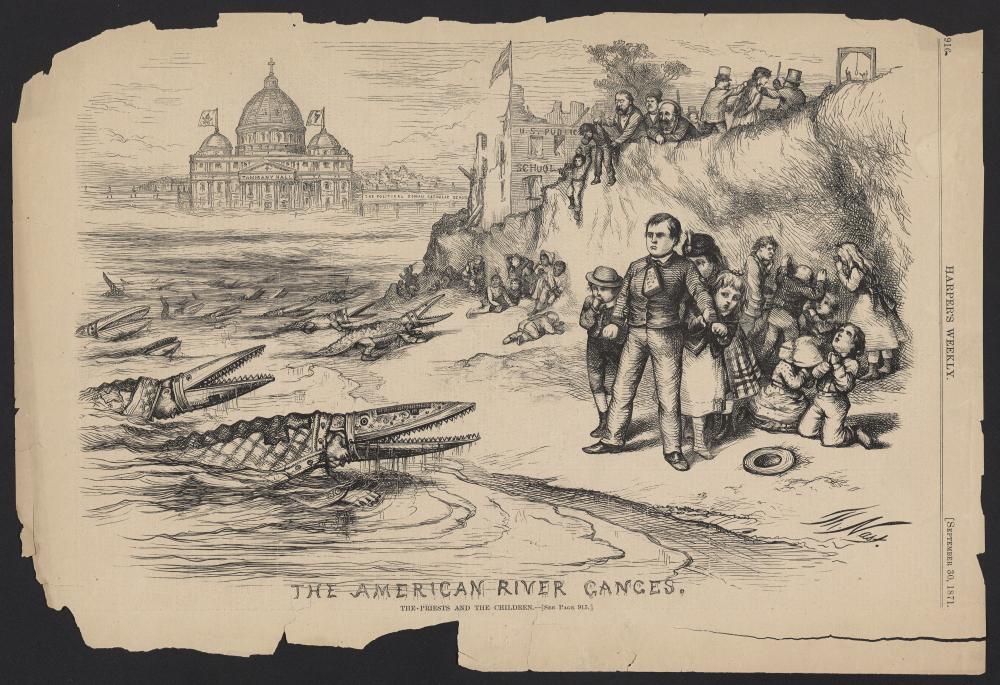Little Sisters of the Poor Saints Peter and Paul Home: Six Takeaways for Faith-Based Nonprofit Employers
by NLI Staff and Kathy Redmond, Catholic Benefits Association
Bottom Line:
In the short term, Little Sisters of the Poor Saints Peter and Paul Home v. Pennsylvania protected religious organizations from being required to provide contraception under the Affordable Care Act (“ACA”) regulations.
However, the decision left important questions unanswered, so litigation challenging the religious exemptions continue throughout the country.
The exemption primarily impacts faith-based employers with fifty or more employees, as employers with smaller workforces are not subject to the ACA.
Nonprofit leaders should plan for change and follow developments in this area.
Faith-based employers who seek to invoke the exemption should carefully document the basis for their eligibility and the sincerely-held religious beliefs which prevent their participation in the provision of contraception.
____________
The Basics
The Little Sisters of the Poor Saints Peter and Paul Home v. Pennsylvania (“Little Sisters – Sts. Peter and Paul”) case arose from a controversy over federal regulations, known collectively as the “Contraceptive Mandate,” which were issued by the Department of the Treasury, the Department of Labor, and the Department of Health and Human Services (the “Departments”). The Contraceptive Mandate required employers subject to the Affordable Care Act (“ACA”) to include contraceptive coverage on their insurance plans.
The Departments created two exemptions to the Contraceptive Mandate for employers whose sincerely-held beliefs would be violated if the employer was forced to provide or to be complicit in in the provision of contraceptives.
The Little Sisters – Sts. Peter and Paul lawsuit focused on technical questions about the Departments’ authority to issue the exemptions, rather than questions about the exemptions themselves. Accordingly, although the Supreme Court’s opinion affirmed that the Departments had the authority to establish the exemptions, key questions about the validity of the regulations and exemptions themselves remain.
When the Mandate Applies.
The Contraceptive Mandate is based on the ACA, so the Mandate only applies to employers who have fifty or more employees (see 26 U.S. Code § 4980H(c)(2). In other words, only faith-based nonprofits with more than fifty employees (“Covered Employers”) need the religious exemption to avoid violating their conscience and sincerely-held religious beliefs.
Faith-based nonprofits with workforces of fewer than fifty employees are not subject to the Contraceptive Mandate in the first place, so the creation and scope of the religious exemption does not impact these nonprofits directly.
The Status Quo.
For now, most Covered Employers can continue to rely on the religious exemption to the Contraceptive Mandate.
However, Covered Employers in states which are parties to the Little Sisters of the Poor Jeanne Jugan Residence v. California (“Little Sisters – Jeanne Jugan”) case still face some uncertainty. 1
In Little Sisters – Jeanne Jugan, the Ninth Circuit Court of Appeals allowed certain states to temporarily block use of the religious exemption in their states. Fortunately, the Supreme Court ordered the Ninth Circuit to reconsider the Little Sisters – Jeanne Jugan case in light of its opinion in Little Sisters – Sts. Peter and Paul, so it is likely that the lingering uncertainty will be resolved soon.
Using the Exemption.
Covered Employers who wish to take advantage of the exemption should work with an attorney to properly document the basis for the organization’s determination that it is exempt from the Contraceptive Mandate. The documentation should include both: (1) the basis for the employer’s position that the organization is eligible for the exemption, and (2) the sincerely-held religious beliefs that would be violated if the Covered Employer participated in the Contraceptive Mandate. Human Resources (“HR”) professionals and other executive staff must be clear about the sincerely-held beliefs of the organization and communicate such beliefs often in HR policies and communications. Also, all of the organization’s employment policies and benefits plans should be absolutely in line with the organization’s stated beliefs, without exception.
For example, the organization should not sponsor a 401(k) program that makes contributions to pharmaceutical companies that use fetal tissue. Similarly, a Catholic organization’s health insurance plan should not cover clinical trials that use fetal tissue.
In some cases, Covered Employers should consider communicating with employees and prospective employees about the Employers’ exemption to allow transparency and cooperation. In the spirit of transparency, discuss your health plan in its entirety, infusing beliefs when talking about how coverage intersects with workplace culture. It is imperative that employees are knowledgeable about their entire health plan.
The primary benefit of clearly defining why the health plan is different than a secular employer’s offering is to reduce the likelihood of conflict by allowing the employees and prospects to fully understand the scope of the insurance coverage available to them. Frequent, targeted communications adjoining benefits and culture is a great tool for the organization to further communicate its mission. Keep in mind that it is a possibility that a litigious employee or prospective employee may be upset by the notice and attempt to sue the organization, starting another lawsuit challenge to the exemption. An attorney or HR professional specializing in religious employers can offer guidance on how best to communicate this to your employees in a responsible manner. Organizations like Catholic Benefits Association provide guidance in these areas through their Human Resources Consultative Services.
Other Contraceptive Mandate Cases.
Because the Supreme Court’s decision in the Little Sisters – Sts. Peter and Paul case was very narrow, there are still unanswered questions about the validity of the exemptions.
These questions hopefully will be addressed in similar pending lawsuits across the United States. Cases to follow include:
Little Sisters of the Poor Jeanne Jugan Residence v. California (see also the case profile here)
DeOtte v. Azar (For more information on this case, see the blog post Federal Injunction Protects Employers from Contraceptive Mandate by Louis Brown, Executive Director, Christ Medicus Foundation)
Irish for Reproductive Health vs. University of Notre Dame
Plan for Change.
Nonprofit employers should be prepared for change related to government regulations regarding healthcare insurance and the Contraceptive Mandate in particular. In addition to the pending Contraceptive Mandate cases, if federal leadership changes after the November election, additional change related to the Contraceptive Mandate and exemptions is likely.
In anticipation of these changes, faith-based nonprofit employers should connect with Catholic healthcare providers and professionals, explore Catholic healthcare insurance options, and learn more about the work being done in the field of Catholic medical ethics. Some leaders in the area of Catholic healthcare include Christ Medicus Foundation, the Catholic Benefits Association, and the Catholic Insurance Company. The Catholic Benefits Association won permanent injunctive relief from the Contraceptive Mandate for its current and future members. Fines are currently $100 per day per covered person for violating the Contraceptive Mandate, accruing since 2014.
For more information about making healthcare decisions aligned with the Catholic faith, see NLI’s whitepaper “Making a Christ-Centered Healthcare Plan,” by Louis Brown, the NLI Healthcare Working Group Chair and Executive Director of the Christ Medicus Foundation.
_______________
A nonprofit and government communications professional, Kathy Redmond’s experience spans international NGOs, nonprofit organizations, as well as local and state government agencies. Her experience includes guest appearances on cable news networks, columns in the Wall Street Journal, the New York Times, and others, as well as a variety of story placements in national and international news outlets. Kathy holds a Bachelor of Journalism degree from the University of Nebraska and a Master of Public Administration degree from the University of Colorado. Kathy lives in Castle Rock, Colorado with her two boys (humans) and three girls (dogs).
.png)




